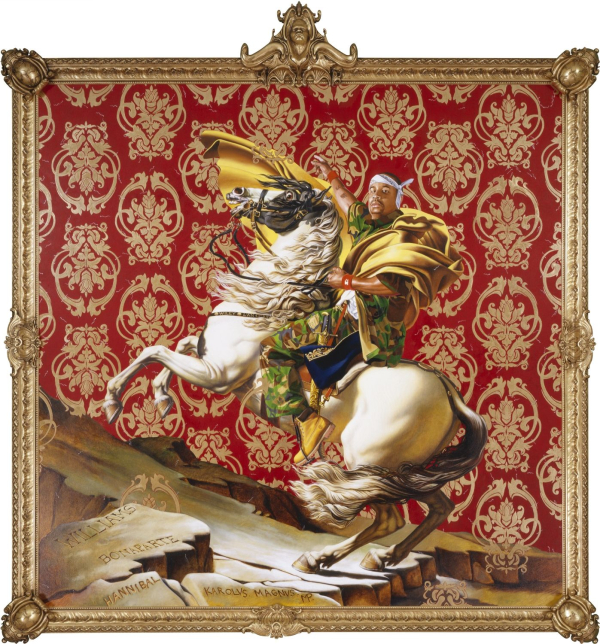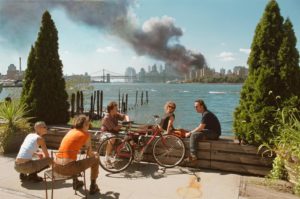Final Paper Revision Assignment T/Th
Final Paper Assignment For this assignment I would like you to substantially revise your first OR second at-home essay. The revised essay should be 1500-words and incorporate two sources other than Ways of Seeing or Ways of Seeing. This should be a significant revision in which you develop the …
Category Archives: Assignments
Paper 4 Assignment
Reverse Outline T/Th
Reverse Outline Assignment For this assignment you will make a reverse outline using either your first or second paper. While making an outline before writing your paper allows you to plan how you will develop your thesis, a reverse outline is an exercise that you do after you have written a dr…
Paper 2
Paper 2
The main concern of Damon Krukowski’s Ways of Hearing podcast is his analysis of how digital sound has changed our interpersonal relationships and overall sense of community, and he organizes his examination of this idea around six episodes based on six keywords: “time,” “space,” “love,” “money,” “power,” and “noise.” For this assignment, you should write an essay with a thesis statement that analyzes what one of these episodes argues about the relationship between digital sound and interpersonal relationships or community formations. Your paper could take up any aspect of the listening experience that is relevant to the episode you wish to write about, so you could write about listening to music or other aspects of how digital audio affect our relationships or sense of community.
Paper requirements:
- Your thesis should use the templates from They Say/I Say for agreeing and disagreeing simultaneously.
- Your thesis should also be structured around the principles we’ve discussed from “the Sheridan Baker Thesis Machine.” It should have a claim and a rationale.
- You should use at least two quotations from the episode you analyze.
- You should think of one example not mentioned in the podcast that illustrates your point.
Some questions you might ask yourself to get started:
- How does a specific digital audio device shape relationships and how does Krukowski discuss this effect? How has it, according to the episode you’ve chosen, advanced or impeded possibilities for community formation?
- What does Krukowski say about changes to the music listening experience and how these changes have affected the communities that form around music?
- According to the episode you’ve chosen, how have personal headphones, or other wearable devices, shaped our experiences of public spaces like subways or city streets?
- What conclusions does Krukowski draw about how digital devices have affected our experiences of one another’s voices in the episode you’ve chosen?
- What does Krukowski argue about the buying, selling, and circulation of digital music and the communities form around these activities in the episode you’ve chosen?
These are just some of the questions that you might address, but you might find yourself addressing other aspects of the podcast episode you’ve chosen. They are only here to help you start to think about your paper.
Format:
- Paper must have a title
- 1200 words
- Times New Roman
- 12-point font
- double-spaced
Due Dates:
- Proposal due (on course blog): Friday, 11/08/19
- Draft due (in class): 11/14/19
- Final Draft due (on Blackboard): 11/19/19
Paper Outline Assignment
Due by 5:00pm 10/17
Paper Outline
Paper Outline Thesis: Write your working thesis statement at the top of your outline. I. Introduction paragraph: · Describe how you plan to introduce the subject of your paper. · What will the “they say/I say” element of your paper be? · How will you state your th…
Blog Post #4
Blog Post #4
Blog Post #4 For this post, please identify which image you will discuss in your first paper and briefly describe what you will say about it. Due by midnight on Sunday, October 13th
Paper 1
Prompt:
Below you will find five images. For this paper I would like to choose one and write a thesis-driven essay in which you analyze the central point of the image based on ideas we’ve been discussing from John Berger’s Ways of Seeing.
In order to do this you should focus on how the image is composed–how it is put together– in order to produce this central point. What strategies does the artist or photographer employ to create this point? How is the subject of the image positioned? What sorts of colors are used? Does the image imply movement or stasis and what effect does this create? How does he or she comment on or use the traditions from European art that Berger has identified? How does he or she depart from these traditions?
As you think about these questions, you should consider the image from the perspective of one of Berger’s primary lenses from an episode of Ways of Seeing. For instance, if you are interested in ideas from episode 2, you might consider how the strategies employed by the artist comments on issues related to gender and/or sexuality. Or, if you’e interested in how the image you’ve chosen combines different European and non-European traditions to produce something new, you could look to the ideas Berger describes in episode 1.
[If you need a quick reminder of what each episode is about you might look to the Wikipedia entry for Ways of Seeing. You might also look at what you’ve written about in your responses to discussion questions and the course blog or watch the episode you’re interested in again.]
The above questions are meant to guide you, and as you work on the paper you may find yourself addressing one or more of these or even asking your own. The key to this paper is writing a focused analysis of how you see the image as conveying what you see as its central point.
Format:
- 1000 words
- Typed
- Double-spaced
- 12-point, Times New Roman font
Due Date:
- 10/24-uploaded to Blackboard before the start of class
Images:
This image is of Ieshia Evans, a demonstrator at an event that followed the shooting of Alton Sterling by a policeman in Baton Rouge, LA, being arrested. It became a widely circulated image within the Black Lives Matter Movement as well as other social justice movements, and became resonant for those who deal with the intersections of race and criminal justice. The photographer went on to win several awards and was a finalist for the prestigious Pulitzer Prize for “Breaking News Photography.”
This is a painting by the artist Kehinde Wiley. Wiley is known for riffing on European artistic tropes to produce portraits of people of color. (As a side note, Wiley just unveiled a statute very similar to this painting in Times Square. It will be in NYC for two months before it goes to Richmond, VA, where it will be on permanent display.)

Kehinde Wiley (American, b. 1977) “Napoleon Leading the Army over the Alps,” 2005. Oil on canvas, 108 X 108 in. Collection of Suzi and Andrew B. Cohen. copyright: Kehinde Wiley (Photo: Sarah DiSantis, Brooklyn Museum.)
This painting, titled “The Forgotten Man,” is by Utah-based artist Jon McNaughton, a vehement critic of the Obama administration and an ardent supporter of President Trump. This painting became associated with the Trump Administration after his inaugural speech.
No Title
No Description
Jon McNaughton, “The Forgotten Man,” n.d.
This is a photograph taken by Thomas Hoepker that seems to show a group of people relaxing while the World Trade Center towers fall on September 11, 2001. (click on the image for a clearer view.)

Thomas Hoepker. USA. Brooklyn, New York. September 11, 2001. Young people relax during their lunch break along the East River while a huge plume of smoke rises from Lower Manhattan after the attack on the World Trade Center.
This is a photograph of Donna Gottschalk, a photographer who has been active in the LGBTQ rights movements since the 1970s. This picture was taken by Diana Davies at the 1970 Christopher Street Gay Liberation Parade.
No Title
No Description
Blog Post #3
Blog Post #3
Blog post #3 Think of a contemporary image that has been used to illustrate wealth. How is it similar to and different from the oil paintings Berger discusses?
Ways of Seeing, Episode 3–Discussion Questions
Discussion Questions Ways of Seeing Episode 3
Discussion Questions Ways of Seeing Episode 3 What is Berger’s point when he states, “To paint a thing and put it on a canvas is a lot like buying it and putting it in your house”? What is Berger suggesting by cutting between camera shots of oil paintings and footage of an antique flea ma…
Blog Post #1
Blog Post #1
Blog Post #1 Building on the idea that, after the invention of the camera, images have become a kind of language that works by manipulating contexts in which they appear, think of an example of a message that you have encountered that has been conveyed by an image or series of images.
Blog Post #2
Blog Post #2
Blog Post #2 How does Berger’s central point in episode #2 compare with contemporary depictions of women? How do these ideas jibe with, for example, conversations taking place about recent depictions of women, the #MeToo movement, or LGBTQ figures? Think of one contemporary example and illustr…



